This series explores my week distilling at Strathearn distillery in Perthshire. If you haven’t read the prologue, Day 1, Day 2, or my review of Strathearn, now’s a good time to do that.
It was Wednesday morning, the start of our third day at Strathearn Distillery’s whisky school, and I was sore. Every muscle in my back was locked up and complaining about the dozens of 50lb bags of barley I’d hauled up the steps of the stillhouse yesterday. I ate a sausage roll, drank some coffee, and grinned. Learning a new career is always painful (I’ve learned three in the past seven years). The sun was shining in Comrie as we waited for Tony to pick us up. The Mad Men of Methven planned on delivering a salvo of tastings today and that meant no driving for us.
The whisky and gin would have to wait. We needed to “pay” for them in blood and sweat first. Both Jeff and I were happy to do so because today was the centerpiece of the week: A spirit run on Wee Erin and mashing in a new batch of wort.
We didn’t waste any time once we got to the distillery. David and Liam accompanied us into the stillhouse as we began charging Wee Erin with 450L of low wines (the product of the past two days’ wash runs) and feints (leftovers from previous spirit runs) at 26.5% ABV. The strength of the charge on a spirit run is pretty important. At Strathearn they aim for 25-30%, as anything over 30% can result in a “blank run” in which no spirit is collected because the fusel oil layer that collects on the surface of the low wines and feints in the spirit receiver can contaminate the still, making future demisting tests impossible. That got a little technical, but all will be illuminated. By a little after 9am we had the steam on and the hatch closed.
With the spirit run started, the four of us turned our attention to the mash tun. We had prepped everything the day before so we could get the mash going ASAP today. It was a cold March 1 so we needed to preheat the mash tun with 300L of water at 77°C. Once the steel was steaming we introduced 425kg of malt from the hopper and ran it through a rehydrator with 900L of water at 72°C. The malt was a soupy, porridge-like consistency as it filled the mash tun. Jeff and I grabbed a pair of wooden paddles, stirring and leveling the mash to ensure a uniform consistency of malt and water. Mashing in felt like canoeing through mud, and this is one example of Strathearn making whisky the old way. Most distilleries have automated this process with rakes that continually stir the mash.
Once we’d emptied out the hopper and achieved a mash consistency that met David’s approval, he produced a digital thermometer and took a few readings. We aimed for between 63-64°C, which is exactly what we had. At this point we installed the sparge arm, which sprinkles water over the mash, and pumped another 700L of 77°C water over the steeping malt. Once sparging was complete we secured the lid on the mash tun and let it sit for 90 minutes.
We’re making beer. Many people don’t realize that to make whisky you must first make beer. We aren’t using hops, but the process is essentially the same. We’re using the hot water to dissolve the sugars in the barley, and we’ll drain off that sugary liquid after the steeping is finished. We’ve used 1900L of water in the mash and we’ll collect 1600L of wort at a gravity of 1080 (a measurement of the liquid’s sugar content — 1080 is quite high). All of that sugar will become alcohol in the fermenter, which is the other half of making beer.
Now we had two balls in the air: The spirit run and a mash. While Jeff cleaned the grain valve and rehydrator I attended to Wee Erin. The first drops of spirit rolled off the still at 10:36am with a temperature of 82°C. I turned off the steam to Wee Erin and brought it back on bit by bit. We want to run the first section of the spirit, called the “heads” or “foreshots,” very slowly because it makes finding the cut point easier. A distillation’s heads contain all kinds of compounds and congeners like methanol we don’t want in the spirit. They give nasty flavors, headaches, and worse. These compounds are the first to vaporize and come out of the still but they eventually peter out and lead us to the promised land — the “heart cut.” At any given distillery in Scotland or around the world you’ll see a spirit safe where readings are constantly being taken and the clock watched. They make cuts based on certain timing milestones or at specific strengths because they’ve distilled enough to know when the timing is right to switch over to the heart.
But you have to wonder. Every distillation is different, and it seems like they’re sacrificing accuracy for ease. At Strathearn the spirit run’s cuts are done the old way like everything else: By taste. Not right away, mind you. After every four liters of collected spirit we performed a demisting test whereby we filled a little test tube with a 50/50 solution of water and spirit. Give it a shake, let it settle, and look for the blue band. Those are fusel oils, and we want that band to shrink until it’s almost invisible. That tells us we’re close to the heart cut and should start tasting.
Liam joined us for the heart cut. We all swiped our fingers (many times) through the spirit and gave it a taste. The heads can still taste good and sweet, but it has a cherry or pear metallic tang. When the sweetness changes to a malty sweetness you know you’re in the heart. Liam and David concurred at this point, but, if I’m honest, I didn’t notice the flavor change. It was 11:11am and we’d collected 14L of heads. We replaced the heads container with our spirit container and let Wee Erin make the sweet stuff. The heart cut began around 75% ABV, and we kept the heat low for a slow distillation. Every 20L we emptied the spirit container into the spirit receiver and made some notes in the logbook, a tool which is a stillhouse bible.
Our last task before lunch was emptying the mash tun into the fermenter. Using a bunch of hoses, a pump, a heat exchanger, and an underback (an intermediate vessel between the mash tun and fermenter), we drained the sugary wort and pumped it through the heat exchanger (to cool it down) and into the fermenter.
We broke for a quick lunch of beef stew, mashed potatoes, and a few tastes of malts like Laphraoig 10 Cask Strength, Caol Ila Carn Mor, and Glenkinchie Distiller’s Edition. Suitably fortified, we returned to the stillhouse to hydrate 1kg of dry yeast in a bit of wort and 3 gallons of 37.5°C water. While the yeast fed we checked the level of the fermenter with a yard stick. Who would’ve thought yard sticks would be so crucial in a stillhouse? Using the handy pump we recirculated the wort in the fermenter to aerate it and homogenize its temperature. Twenty minutes later the wort sat nicely at 25°C and we dumped our two buckets of foaming yeast into the fermenter. Strathearn temperature-controls their fermentation at 22°C for 24-36 hours.
With the fermentation started we turned our attention back to the heart cut of the spirit run because the final, tails cut neared. As the heart turned into the tails the sweetness bled into a spicy/funky/cheesy note, and we could all taste it. The off flavors tingled our cheeks. The heart cut ended around 60% ABV. We switched out the spirit container for the feints one and turned up the steam and condenser for a faster flow. We didn’t have to make anymore cuts so a slow distillation was no longer necessary. In total we captured just over 100L of heart cut, which is exactly what the Strathearn boys aim for.
Our final task before end-of-day cleanup involved raking out the dense malt from the mash tun. This task was all elbow grease and wooden paddles as we raked the grain into big yellow buckets and hauled them out to a waiting tractor loader. More feed for the farm’s livestock. Our sweaty work complete, the guys began bringing in platters of drams for us to to taste while the tails ran off Wee Erin.
Liam started us off with an array of Strathearn’s gins, including Heather Rose, Juniper, Citrus, and Oaked Highland. The Heather Rose was quite nice, especially with a splash of tonic that turned the liquid pink. Next came a tray of Uisge Beathas, a name Strathearn uses to distinguish malt spirits that don’t quality as single malts. These creative, fascinating drams included a 6-month old aged in cherry wood, a 6-month old aged in mulberry wood, a 3-month old peated spirit aged in Acacia wood, and a 3-month old peated spirit aged in chestnut wood. Each uisge beatha was drinkable and highlighted the wood it was aged in, all of which felt related to oak but packed a portfolio of previously unexperienced flavors. I’d really love to sit down with this platter and ponder the flavors more.
The platters kept coming and the next one was a mixture of cider brandy, rum, and beer brand — more of Strathearn’s wizardry. The cider brandies went head to head, one aged in French oak and one aged in American oak, and both would’ve tasted great in a Wisconsin Old Fashioned. The rum was aged in a whisky cask, which is probably what I need if I’m ever to become a rum guy. I’m not sure what the final dram was. Tony called it a beer brand or a distiller barley wine, but if it’s distilled beer it’s not clear to me how that’s different from whisky. I enjoyed it, but help?
By this point both Jeff and I were pretty smiley. Tony popped in with a couple of Strathearn whiskies, a work in progress that was only 55 days old and a Port-cask-aged dram that was ridiculously good. The work in progress proved that age is not the defining factor when it comes to flavor.
The end of our third day arrived as we finished cleaning up the stillhouse. Wee Erin had done a good job and received a bath. She’d be working again tomorrow, just like us. Our final tastes of the day included Strathearn’s own 3-year old single malt whisky and a beguiling peated genever with a virgin French oak wick in the bottle. My god, that was a life-changing liquor. Tony, if you’re reading this, please send some ASAP!
We piled into Tony’s car with David’s bottle of Laphraoig 10 Cask Strength because he’s a darn good guy, not because we filched it. Something told me I wouldn’t be feeling great tomorrow…
Disclosure: Strathearn provided me with a complimentary week of whisky school. All thoughts and opinions expressed here, as always, are my own. Special thanks to Jeff and David for the photo assist.

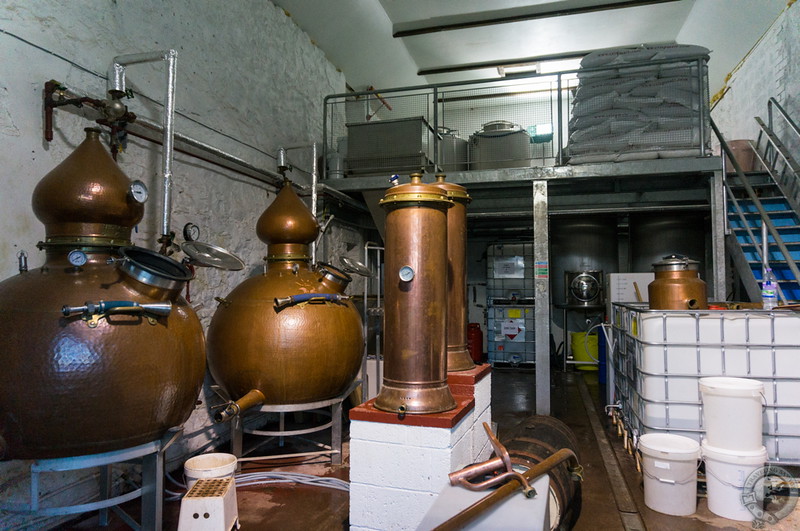
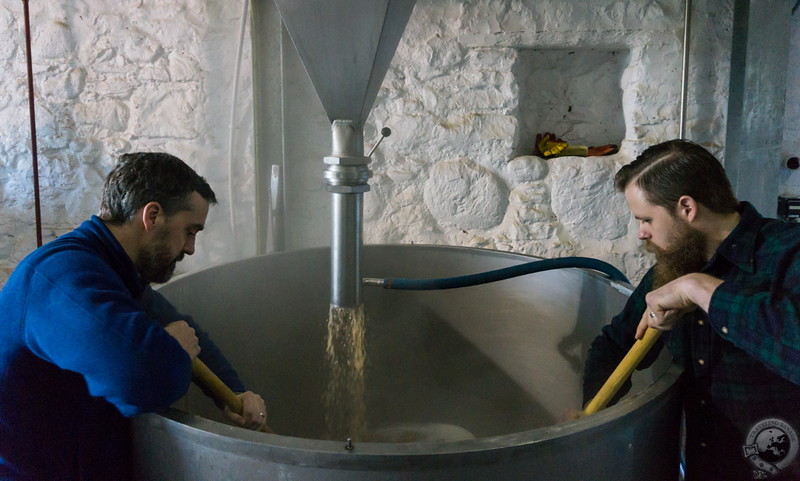
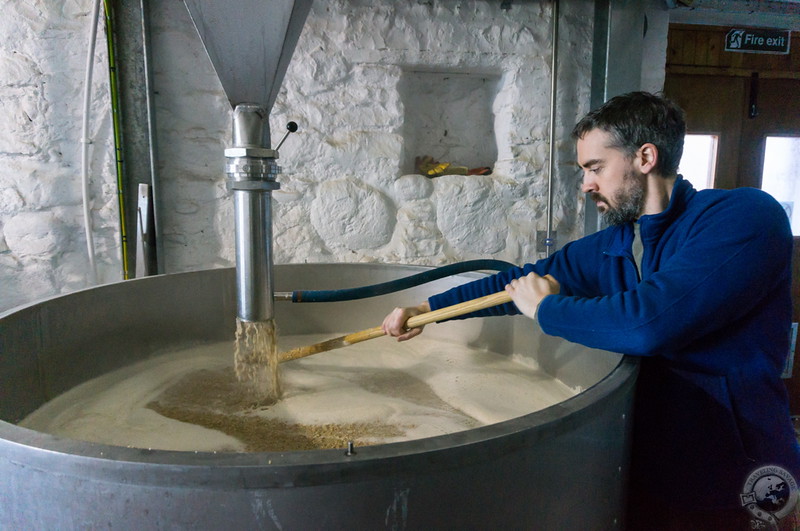
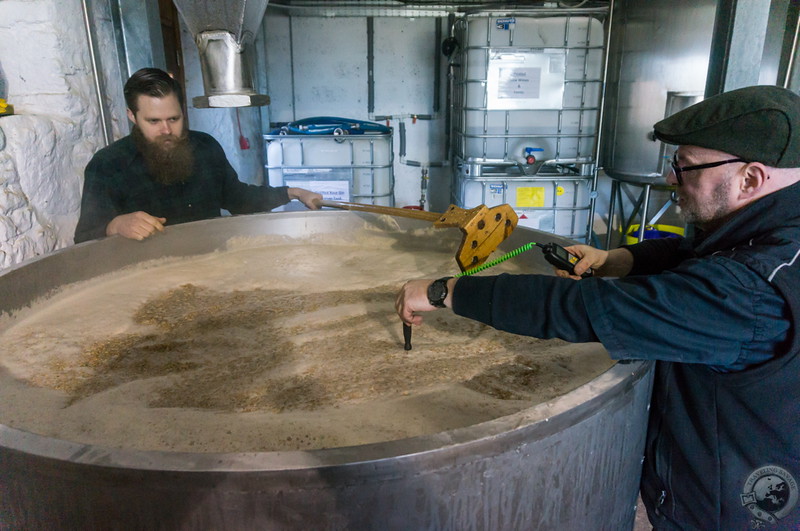
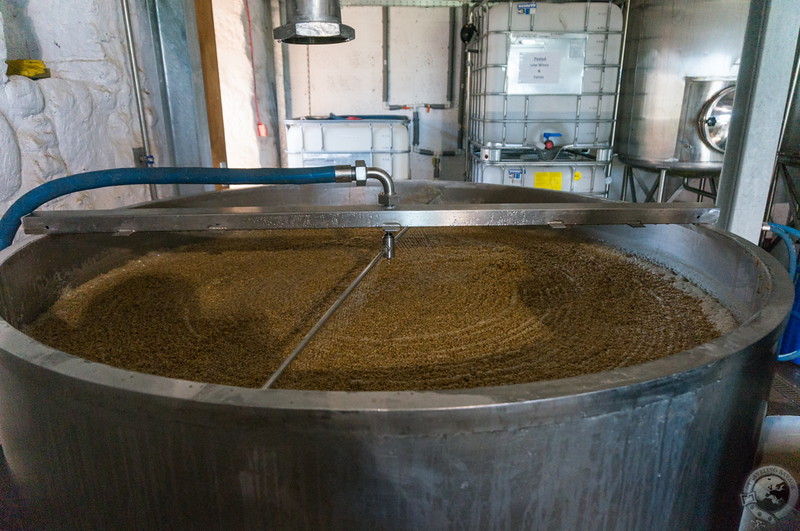
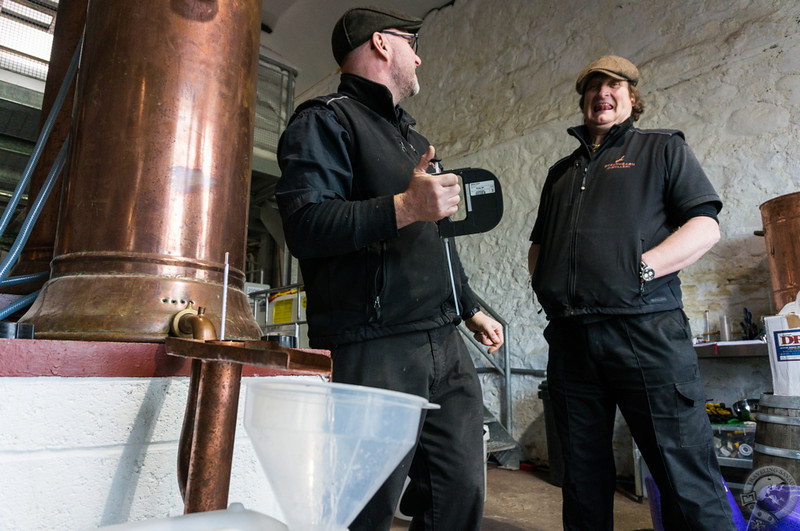
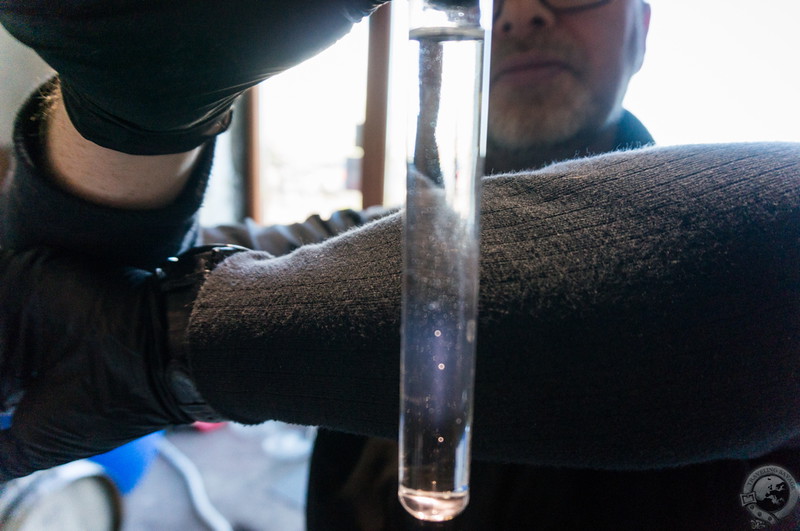
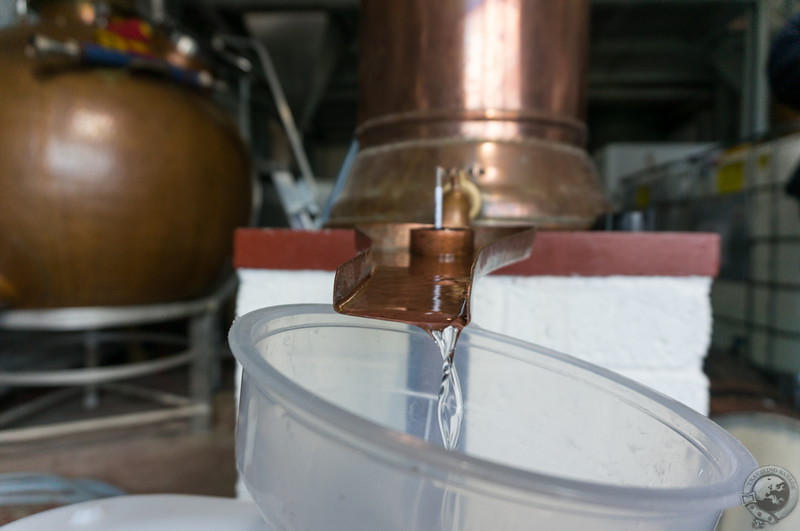
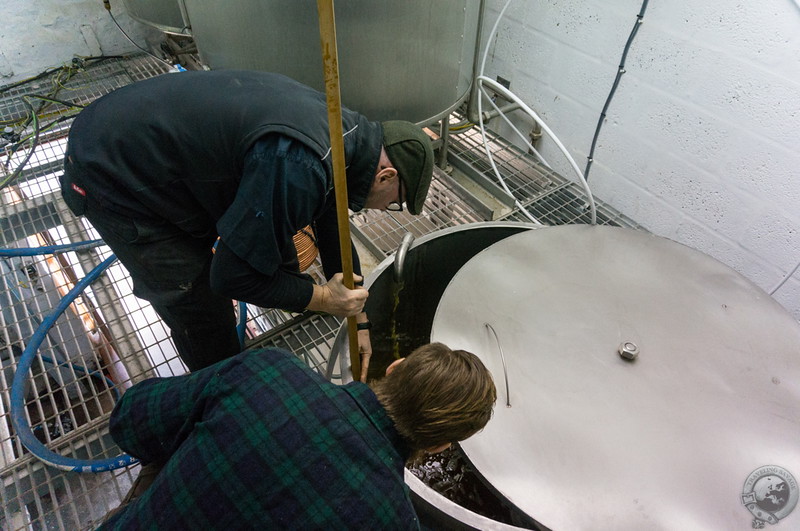
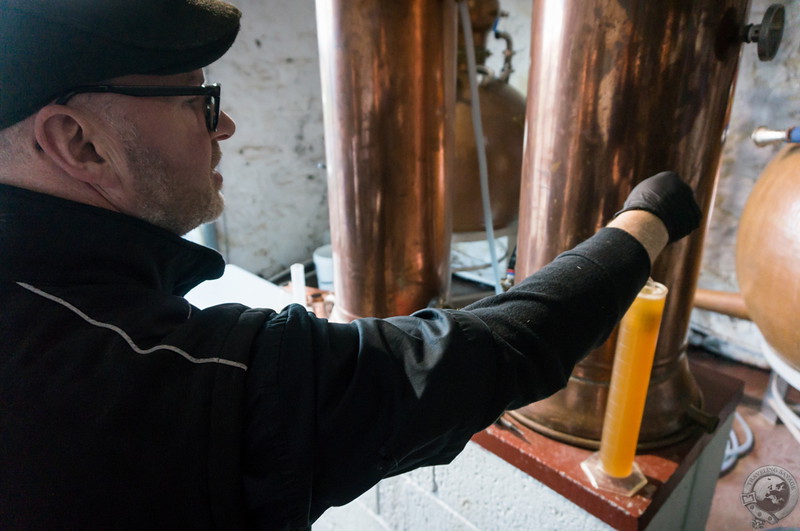
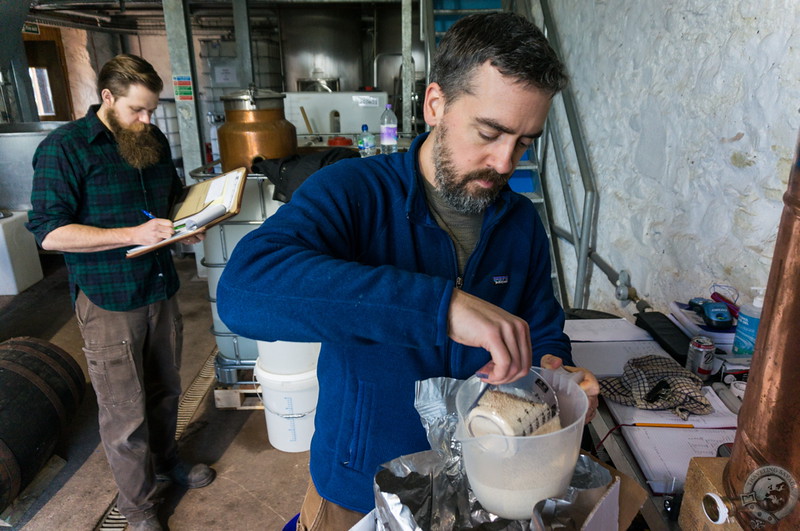
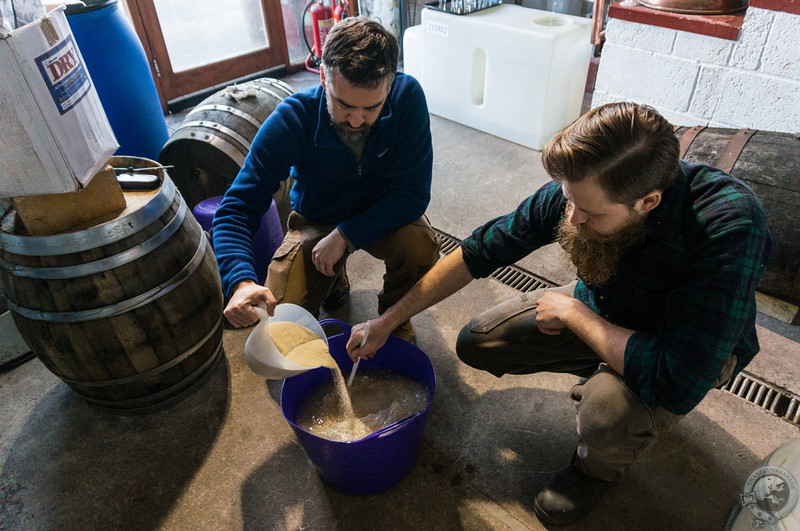
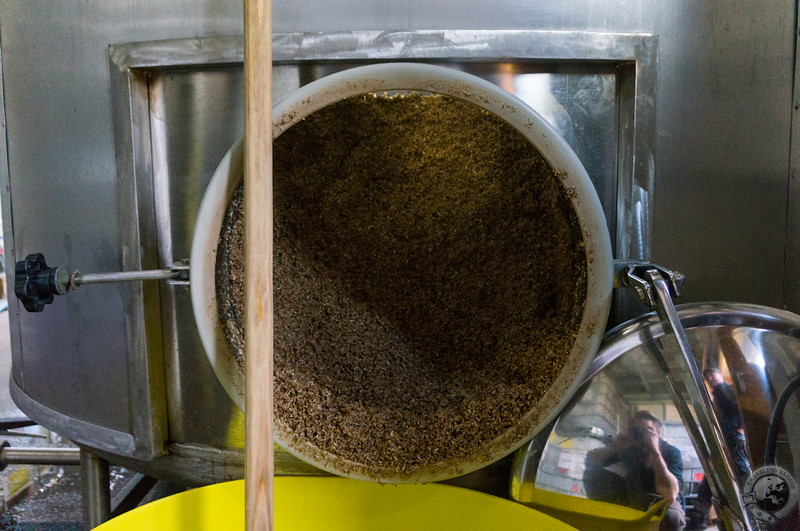
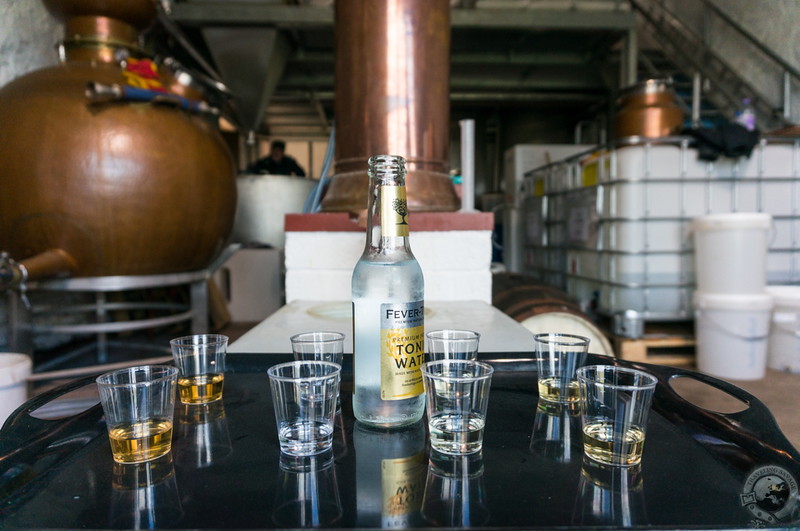
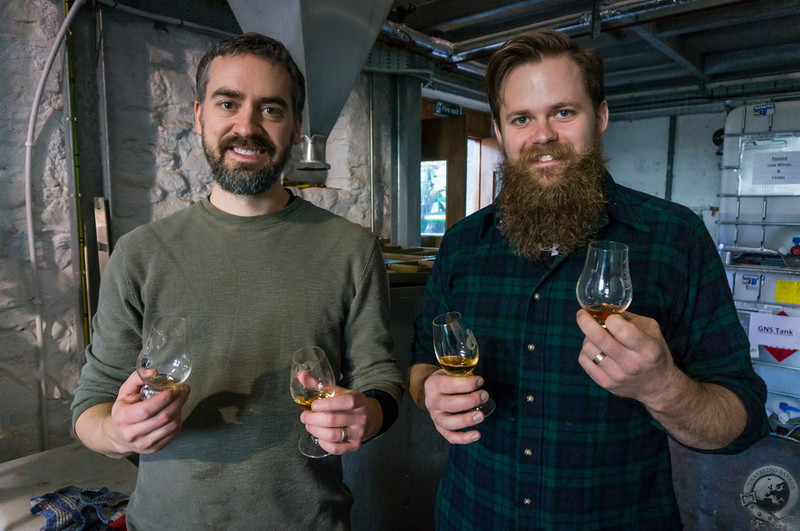
Hi Keith,
We’ve been enjoying these posts and seeing a day in the life of a distillery worker. Interesting to learn all of the other “stuff” that goes on, the nuances and science of whisky making. Thanks for shedding a light on the process. I bet it smelled heavenly in there.
Cheers,
Joanie
Glad you’re enjoying the posts, Joanie. It was a hugely satisfying experience. Yes, the stillhouse was my kind of perfumerie.
[…] at Strathearn distillery in Perthshire. If you haven’t read the prologue, Day 1, Day 2, Day 3, or my review of Strathearn, now’s a good time to do […]